Extraneous
Posts: 1810
Joined: 6/14/2008
Status: offline

|
quote:
ORIGINAL: Centuur
Point is not the origin of the resources, but the transportation of the Philippine resource.
I'll rephrase this...
RAW: 13.6
Transporting resources
Apart from the Japan-US agreement, a Major Power may only transport resources that it controls and, if active, resources for other active major powers on its side.
The transportation of US resources to China by US convoys is specifically stated as an exception to this rule.
For trade agreements in place at start of the game, it is always the recipient who has to provide the convoys, according to RAW, except for the joint USA-Japan convoy...
1) How is the US going to transport the Philippine Resource into the Sea of Japan? He isn't allowed to do so, because even if he puts a CP into the sea area's to transport the resource to the Sea of Japan, the US convoys there are not part of the joint US-Japan convoy (which is described in the rules as being in the stated sea areas). Only convoy's part of the joint convoy in the stated sea areas can be used to transport resources to Japan by the US.
This means that US convoy points cannot be used to transport the Philippines resource because convoys from the recipient (Japan) have to be used for this. If the Japanese elects not to use his convoys for this (and he decides which resource is moved through which convoy) the US has to send all resources from the USA. If the US player has 4 CP in each sea area of the joint convoy line, he will lose the build point, if the Japanese doesn't want to transport the Philippine resource. That build point can than be used by Japan...
Is this the right interpretation of the rules? I think it is...
2) Then there is the question of being in default, when this happens:
RAW:
If, for whatever reason, either side has not met its obligation to
provide its resources or build point in the production step and US
entry option 31 has not been chosen then...
What are the obligations? For the USA to provide the resources and for Japan to provide the build point. It doesn't say that the USA has to receive the build point and Japan has to receive the resources. So I'll side with Paulderynk on this one (how strange this appears to be...).
quote:
5.1 Trade agreements
Japan-USA
The USA and Japan start the game with an agreement in place to exchange a Japanese build point for US resources. The USA must supply Japan with 4 resources each turn. Two of them must be oil resources. These amounts can be reduced, or avoided entirely, by certain US entry options (see 13.3.2). Japan must lend lease the USA with 1 build point a turn until the USA embargoes strategic materials (see 13.3.2, entry option 13).
To avoid US entry penalties (see below), the USA must have enough convoy points in the West Coast, Mendocino, Hawaiian Islands and Central Pacific ocean sea areas to transport the resources to Japan. Similarly, Japan must have enough convoy points in the Japanese Coast sea area to transport the build point to the USA.
quote:
WiF FE Rule Clarification Summary
Q5.1-2 For at-start Trade Agreements, must the RP and BPs provided by JA, US, GE, and RU come from their respective home countries?
Harry Rowland's Answer
No, but they must satisfy rule 5. Lending Stage that is they must be delivered if possible.
1) Q5.1-2 is a rule clarification to the RAW so we use Harry Rowland's Answer. Since it specifically states "at-start Trade Agreements, must the RP and BPs provided by JA, US" we can use the Philippines Resource.
The convoy points only have to reach the Central Pacific Ocean where the Japanese Convoy Point's receive (but may not as yet control) the Resources.
Convoy Line: The Philippines > Bismarck Sea > The Marianas > Central Pacific Ocean
quote:
WiF FE Rule Clarification Summary
Q5.0-1 When is the control of resources and build points changed for Trade Agreements?
They may be transported as either the giver's or recipient's resources and/or build points at the giver's discretion, until they arrive in any city or major port controlled by the recipient that they can be transported to, at which point they become the recipient's (if not already). Date 09/03/2009
quote:
WiFFE-RAW-7.0.pdf
If, for whatever reason, either side has not met its obligation to provide its resources or build point in the production step and US entry option 31. Oil embargo has not been chosen then
That side does not get its promised resources or build point that turn, and the other side can use those points themselves;
If Japan was in default, the USA may add 2 entry markers to the Japanese entry pool; and
If the USA was in default, Japan must randomly remove 2 entry markers from the Japanese entry pool (returning them to the common entry pool). If there aren’t enough markers to remove, the USA can never declare war on Japan and must now start taking markers from the Ge/It pool. If there aren’t enough markers there, the USA can never declare war on Germany or Italy.
quote:
WiFFE-RAW-7.0.pdf
5. Lending Stage
If, during production (see 13.6 Production), it is possible for the promised resources (or build points) to be delivered then they must be delivered. If you cannot meet the promise you made (for example because the convoy points were not set up, were destroyed, or a railway line cut), you still cannot use them yourself this turn.
2) Actually you need to establish who is in default you have to know who controls the BP and Resources and when.
Japan provides 5 Convoy Points in the Japanese Coast sea area.
Japan chooses to control the BP until it reaches a major USA port instead of just to the Central Pacific Ocean sea area.
Why do the Japanese want to control the BP until it reaches a major USA port instead of just to the Central Pacific Ocean sea area? To force the issue since Japanese production comes before USA production.
The USA provides only 4 Convoy Points to only give the Oil and Resources to Japan and none to receive the BP from Japan.
Whether the USA chooses to control the Resources until it reaches a major Japanese port or only to the Japanese Coast sea area is not relevant at this time.
Since during the 13.6 Production step the USA has not allocated enough Convoy Points (see: 13.6.1 Resources) to have the Japanese BP received at a major USA port.
The USA is in violation of the Trade Agreement.
For the Japanese the difference between:
11 BP or 10 BP and 2 Saved Oil (with the Trade Agreement)
8 BP (without the Trade Agreement)
Is fairly obvious.
< Message edited by Extraneous -- 11/24/2012 12:26:53 AM >
_____________________________
University of Science Music and Culture (USMC) class of 71 and 72 ~ Extraneous (AKA Mziln)
|
 Printable Version
Printable Version
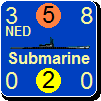





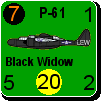
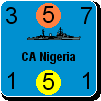
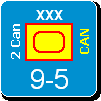
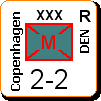
 Sounds like we almost completely agree then
Sounds like we almost completely agree then  New Messages
New Messages No New Messages
No New Messages Hot Topic w/ New Messages
Hot Topic w/ New Messages Hot Topic w/o New Messages
Hot Topic w/o New Messages Locked w/ New Messages
Locked w/ New Messages Locked w/o New Messages
Locked w/o New Messages Post New Thread
Post New Thread